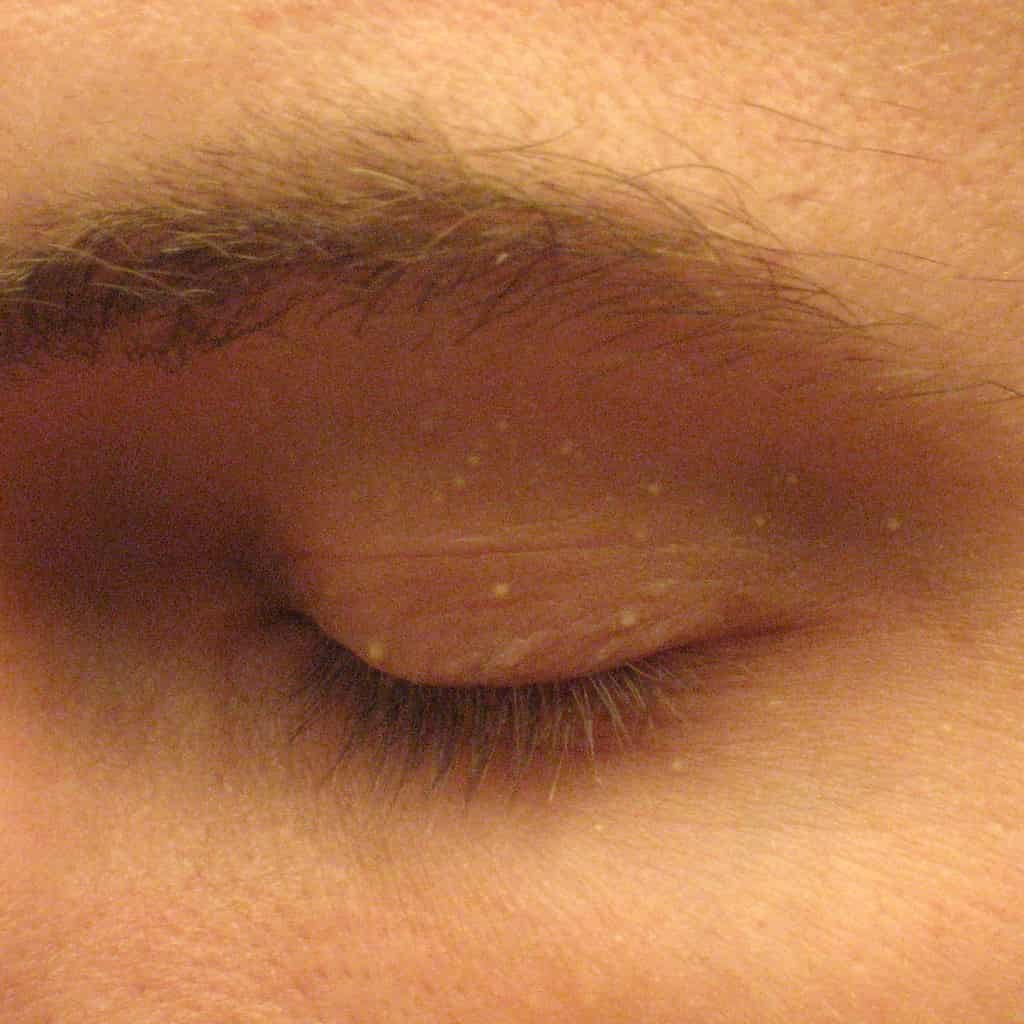Milia Tiny White Bumps (Milium Cyst)
Milium spots appear on the face (often mistaken for whiteheads). Milia are microcysts formed by clusters of dead skin cells, or rather keratin lamellae, oil skin glands; a substance produced naturally by the skin. They occur mainly on the face, but also on the entire body (including genital area). They are not a skin disease, but a purely cosmetic problem.
Causes of milium grains
The cause of milium grains still remains unclear. The formation of grains of milia would be caused by the obturation of the hair follicles: application of creams that are too rich, excessive exposure to UV rays, excessive use of abrasive products or gestures (scrubs)…
The milia may result from a clogged pore or from a clump of cell debris and sebaceous cells forming a white lump under the skin. The main cause comes from the fact that the person cannot evacuate sweat optimally.
Certain dermatological diseases or certain skin treatments can also lead to their appearance. This is the case of epidermolysis bullosa, a genetic disease that promotes poor healing of the skin, and retinoids, which make the skin atrophic. In general, grains of milium can accompany many genetic dermatoses, underlines the dermatologist.
In children, milium grains can be of congenital origin and appear from the first weeks of life. “It’s quite commonplace, there is nothing to worry about, especially since these microcysts disappear on their own in a few days or a few weeks”, reassures the specialist.
Sometimes milium spots appear in the mouth (known as “Epstein beads”) or on the nose, but these two particular forms are equally benign and generally do not require treatment.
Generally, milium grains occur when the sweat glands are clogged. Their diameter being very thin, they have a tiny opening and sweat can easily get stuck in the channel intended to evacuate it. When it clogs, the keratin that comes out forms this unsightly little white ball.
A simple clinical diagnosis
A skin examination is usually sufficient to diagnose milium grains. Sometimes, however, some small pimples mistakenly suggest millet grains.
This is the case with sebaceous hyperplasia of the newborn, which is distinguished, however, by more oily skin and more yellowish lesions, or pustulosis, linked to yeasts (fungi).
Grain of milium: what treatment?
The treatment of milium grains is not essential, insofar as they disappear spontaneously in most cases. “The best thing is to wait for it to go away on its own,” confirms the dermatologist.
For people who are more impatient or who cannot stand these marks that they consider unsightly, a consultation with the dermatologist can be considered. The dermatologist will pierce the skin with a very fine needle and remove the milium speck.
Warns against the temptation to tackle it yourself. “You should never try to pierce a grain of milium, it is not only almost impossible but you risk an infection.” A word of advice: be patient and avoid mirrors for a while!
CAN WE PREVENT THE APPEARANCE OF MILIUM GRAINS?
Unfortunately, it is not possible to completely prevent the appearance of milium grains. On the other hand, a few precautions and a good care routine could help limit their appearance. A few preventive reflexes also benefit the overall appearance of the skin. Bonus effect: they also slow down the appearance of blackheads, play an essential role in the radiance of the complexion and help prevent premature skin aging.
1. Choose non-comedogenic cosmetics, whose formula does not clog the pores of the skin.
2. Opt for gentle cleansing products that respect your skin type.
3. Don’t overload the skin with formulas that are too rich or products that cover too much. Unless your skin type requires it, prefer all-in-one, non-greasy formulas. Limit the use of foundation.
4. Adopt a simple but regular routine to promote the elimination of dead cells. Cleanse your face every night.
5. Also cleanse the skin gently morning and evening.
6. Once a week, exfoliate the epidermis with a gentle scrub. Avoid abrasive and stripping gestures. Prefer gentle scrubs and limit their frequency. Avoid peels and laser.
7. Do not use body product on the face and dry the skin by dabbing it rather than rubbing it.
8. Hydrate and nourish your skin to facilitate cell renewal. Apply a moisturizer to the face morning and evening. Choose a nourishing formula for dry skin or soothing for sensitive skin.
9. Provide specific care for the eye contour. In order to support this fragile area, opt for a suitable treatment without being too rich.
10. Protect yourself from U.V. Avoid U.V. cabins, wear a hat in the sun, limit exposure time and never go out without sunscreen, even in winter.
Most importantly: Take care of your lifestyle, an essential reflex for radiant skin. Get enough sleep, limit stress, practice regular physical activity, avoid alcohol and tobacco as much as possible, excess fat and sugar.
Information: Cleverly Smart is not a substitute for a doctor. Always consult a doctor to treat your health condition.
Sources: PinterPandai, WebMD, HealthLine, DermNet NZ
Photo credit: Wikimedia Commons (Public Domain)



